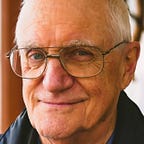Direct Air Capture of CO2 in All the Wrong Ways
By Peter Montague (pm8525@gmail.com) August 22, 2023
The Department of Energy (DOE) put on a webinar Aug. 11 2023 to provide some details about its new “direct air capture (DAC) hub” program. You can watch the video (and get the slides) here: https://bit.ly/3KRSLr0. Direct air capture (DAC) uses machines to extract CO2 out of the air and do something with it.
Here are a few problems with the new program:
The Department of Energy is paying the polluters to clean up their pollution. The “polluter pays” principle has been turned on its head. So long as the oil, gas and coal companies are free to sell their products without limit, government subsidies for DAC create a powerful incentive to produce more CO2. Get paid to produce it, get paid to clean it up. They call it “the circular economy.” Circling the drain is more like it.
The government claims the first two projects they’re subsidizing (with $1.2 billion of public money) — Occidental Petroleum’s (Oxy’s) 1point5 project in Texas and Battelle’s Project Cyprus in Louisiana — will NOT be used for enhanced oil recovery (EOR). But what will stop these projects from employing EOR after they’ve taken their $1.2 billion of federal money? (Oxy originally announced 1point5 as a “CCS or EOR” project; http://bit.ly/3OAFTGR.) EOR pumps CO2 into the ground to extract more oil, leaving some of the CO2 in the ground. Real-world experience with EOR reveals that, for every ton of CO2 buried in an old oil field, 2 to 5 tons of CO2 are released into the atmosphere, making the climate emergency worse. http://bit.ly/3Hhl27D
Occidental Petroleum (Oxy) CEO Vicki Hollub has been explicit about it: Oxy’s purpose for developing DAC is to keep pumping oil; see Wall Street Journal article Apr. 11, 2023: “Occidental Makes a Billion-Dollar Climate Moonshot — So It Can Keep Pumping Oil.” https://bit.ly/47HvRg6
Oxy has announced they plan to build 135 DAC plants and finance them by selling offsets (and of course by getting paid many, many billions of public dollars). https://bit.ly/3OB2h2R
Government-subsidized DAC will be used to delay closing dirty power plants, continuing and extending the assault on front-line communities.
DAC projects that extend the lifetime of fossil fuels will turn more climate campaigners against the concept of DAC even though it is now completely obvious that carbon dioxide removal (both nature-based carbon dioxide removal [CDR] and mechanical DAC) will be needed to maintain a livable planet. Explanation: Global CO2 emissions are a GLOBAL problem (the U.S. only emits about 14 or 15% of global emissions and rich nations, together, only produce about 35% of global emissions) and countries producing at least 25% of current emission have little or no capacity to cut their CO2 emissions without destroying their economies and ruining life for their citizens, likely fomenting revolution; they’re not gonna do it. (See http://bit.ly/3iLqYxu pgs. 40 & 41 and related text.) Therefore, it will be VERY hard to cut global emissions 100 percent.
Furthermore, the global heating emergency we are experiencing today isn’t being caused mainly by present-day emissions (about 36 billion tonnes of CO2 equivalents per year) — it’s being caused mainly by the ONE TRILLION tonnes of CO2 still polluting the atmosphere from previous emissions. (See the IPCC’s Sixth Assessment Report, Table 5.1, pg. 699.) After emissions cease (whenever that may be) global temperature will remain elevated for hundreds of years and therefore climate will not stabilize for hundreds of years. https://bit.ly/3OYKy6Q To stabilize climate, carbon dioxide removal (nature-based CDR, like planting trees and regenerative agriculture, and mechanical DAC) will be needed to remove CO2 from the air.
The only way (that I know of) to prevent this essential technology — DAC — from being turned against humanity is for the federal government to nationalize the oil and gas industry (and nationalize all DAC technologies so they can never be used for EOR). https://bit.ly/3iT7dod
Until oil and gas companies are nationalized, DAC will be used for CCS or EOR or both. On our present course, CCS will fail, as it always has, which will create the need for more DAC, to be subsidized, of course, with public money. More “circular economy.” The oil companies are seeing a new goldmine in the sky.
Here’s a recent report from Rutgers University offering 10 essential policies for cutting carbon emissions, including nationalization of the oil companies: http://bit.ly/3OQFb9T
And, in case you think nationalization of industries is unusual in the U.S., here’s a brief history of U.S. nationalization, 1917–2009: http://bit.ly/3DUNfA9
If you get a chance to watch the webinar https: bit.ly/3KRSLr0, you will see how thoroughly our Department of Energy has fallen into the pockets of Big Oil. During the webinar, DOE officials exaggerate the jobs to be created (finessing the difference between construction jobs and long-term employment), they gloss over the assault on EJ communities created by extending the lifetime of existing power plants (as a sop they are offering “community benefits agreements” instead of relief from deadly pollution), and they claim their goal is to create a fabulously lucrative new DAC industry even though they have to know the real reason behind industrial DAC today is to extend the life of fossil fuels — don’t they read the Wall Street Journal? https://bit.ly/47HvRg6
Big Oil has take in $3 billion every day for 50 years, so it has enough money to buy anything it needs or wants, including government policies. https:/bit.ly/3aZ3AsD In a nutshell, Big Oil money is the reason why we have been unable to kick our oil addiction for the last 40 years. The only sure way to end Big Oil’s control of government policy (that I know of) is to nationalize the oil industry. And then put control of the oil corporations into the hands of some government agency that is NOT the Department of Energy.
